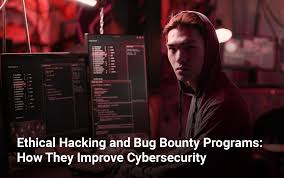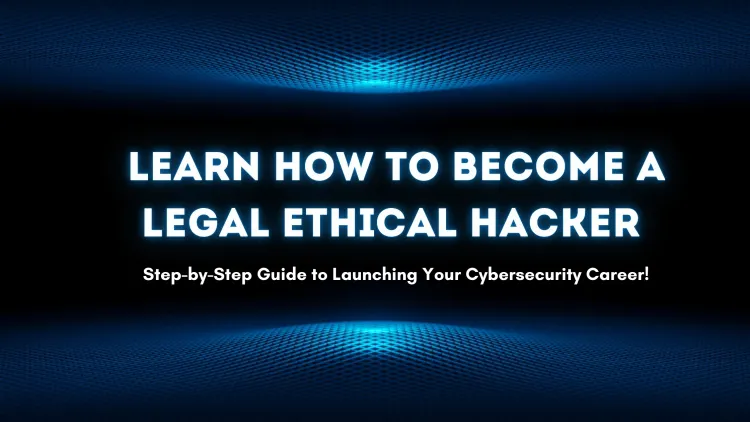Ethical hacking empowers you to secure systems by finding real flaws before criminals do. Yet hacking without permission is illegal. This tutorial shows you how to practice ethical hacking legally. You’ll learn step‑by‑step methods for Capture The Flag (CTF) events and bug bounty programs. We’ll cover tools, platforms, and best practices that keep you on the right side of the law.
How to Practice Ethical Hacking Legally: Why It Matters
Cybercrime costs global businesses an estimated $8 trillion by 2023. Skilled ethical hackers can prevent these losses. Learning how to practice ethical hacking legally ensures you build marketable skills—and avoid jail time. According to Cybersecurity Ventures, the workforce gap hit 3.4 million in 2024. By following legal paths you fill that gap and help organizations stay safe.
How to Practice Ethical Hacking Legally: Capture The Flag Steps
Capture The Flag events simulate real cyber‑attack scenarios in a safe, legal environment. They test your skills across web, network, and crypto challenges.
Setting Goals to Practice Ethical Hacking Legally
Define clear learning objectives before joining a CTF. Aim to master web exploits, reversing, or forensics. A focused plan boosts progress and keeps you motivated.
Joining CTF Platforms
Register on popular CTF platforms:
-
CTFtime – Aggregates global CTF events.
-
Hack The Box – Offers “Starting Point” labs and community hints.
-
TryHackMe – Provides guided learning paths.
These platforms host beginner‑friendly challenges. You work on real‑world scenarios under legal terms of service.

Solving and Reporting
Each CTF challenge includes a “flag” string. You submit this string to score points. Write clear notes on your approach. Reviewing write‑ups from others deepens your understanding.
Reconnaissance and Testing
Use active tools like Nmap and Nikto for scanning. Combine them with passive methods such as reviewing public code repositories. Always document your steps.
Writing a Valid Report
A quality report includes:
-
Summary of the issue.
-
Steps to reproduce with screenshots.
-
Impact assessment and remediation advice.
Clear, concise reports earn faster triage and higher rewards. Top researchers on HackerOne earned over $2 million in 2024.
Tools and Platforms for Legal Ethical Hacking
Equip yourself with industry‑standard tools. Many are free and open‑source:
-
Burp Suite Community – Web‑app scanning and manual testing.
-
Metasploit – Exploitation framework for labs and private pentests.
-
Wireshark – Network packet analysis.
-
Nmap – Port scanning and service detection.
For theory, see the Ultimate Guide to Ethical Hacking: What It Is & Why It Matters for foundational concepts. Internally, it outlines legal scope, methodologies, and ethics.
Best Practices to Practice Ethical Hacking Legally
-
Always Obtain Permission. Never test systems without explicit consent.
-
Read Program Rules. Understand scope, excluded targets, and reporting guidelines.
-
Stay Updated. Follow OWASP Testing Guide for web app best practices4.
-
Protect Your Identity. Use VPNs, separate lab accounts, and legal disclaimers.
-
Continuous Learning. Join security forums, follow industry blogs, and attend conferences.
Adhering to these practices ensures your work remains ethical, legal, and valued by employers.
Next Steps and Career Growth
After mastering how to practice ethical hacking legally, consider formal certifications:
-
Certified Ethical Hacker (CEH) – Structured curriculum on hacking tools and techniques.
-
Offensive Security Certified Professional (OSCP) – Hands‑on, lab‑based exam famed for rigor.
Also, contribute to open‑source security projects. This builds your portfolio and credibility.
Conclusion
Learning how to practice ethical hacking legally opens a path to a high‑impact cybersecurity career. By engaging in CTFs and bug bounty programs, you gain hands‑on experience without legal risk. Use the tools and best practices outlined here to sharpen your skills. Remember to obtain permission, follow scope, and document thoroughly. Start today on legal platforms like CTFtime and HackerOne. Protect systems, earn rewards, and help close the global security gap.



No responses yet